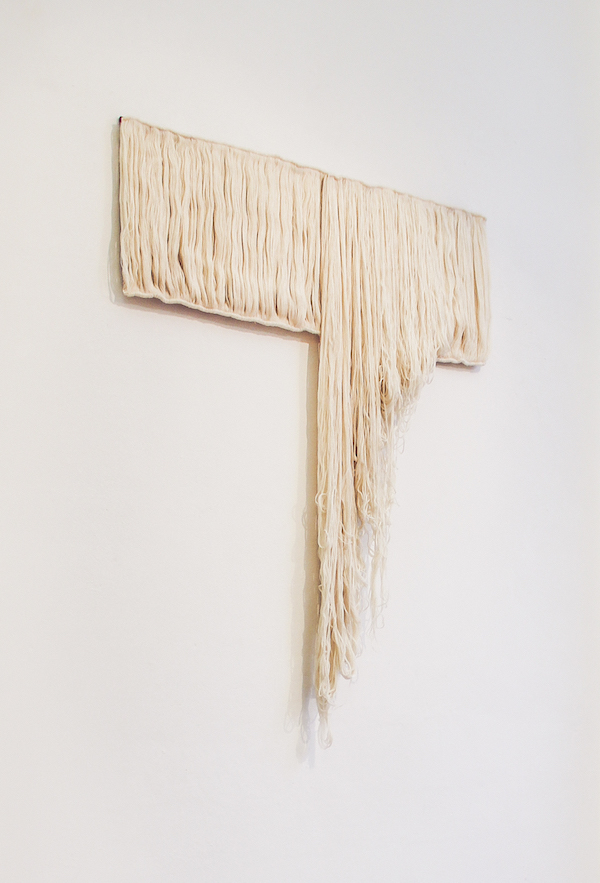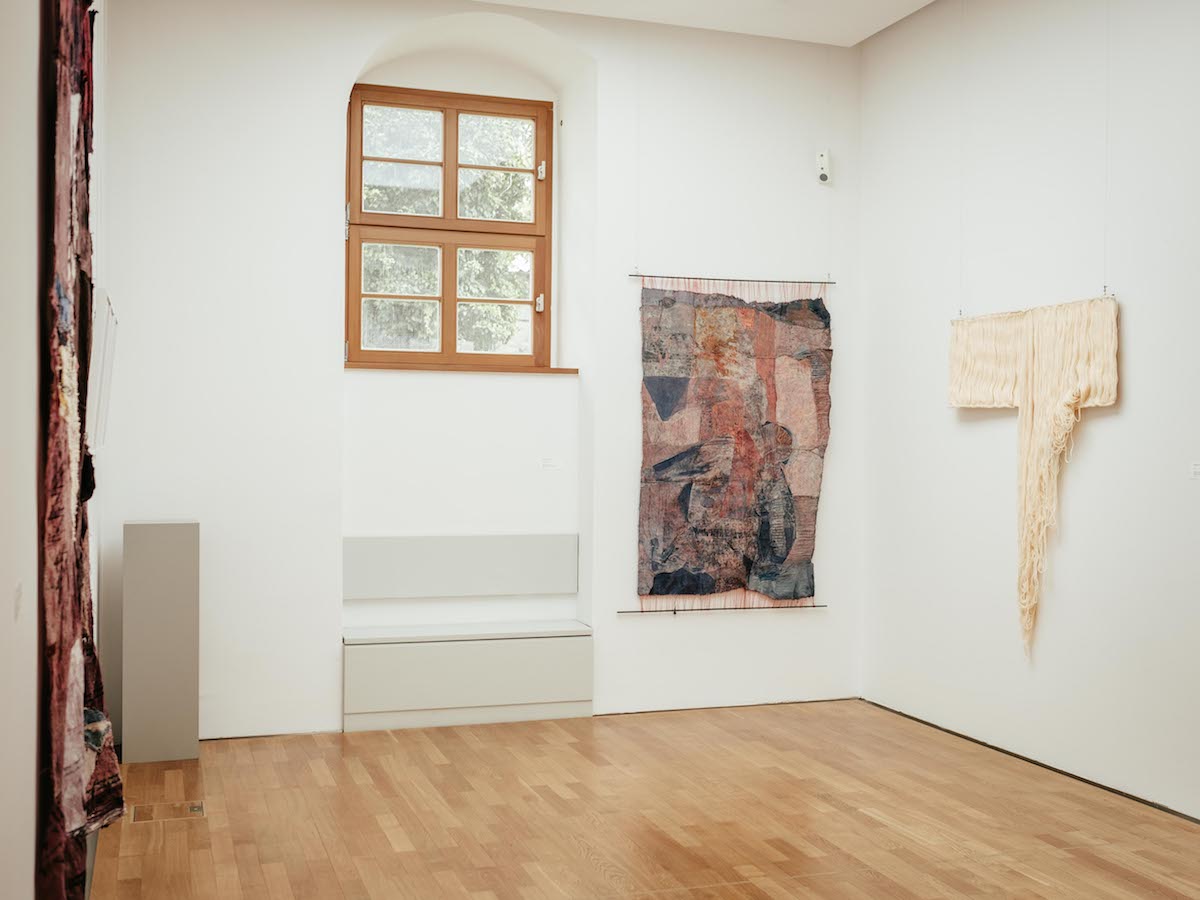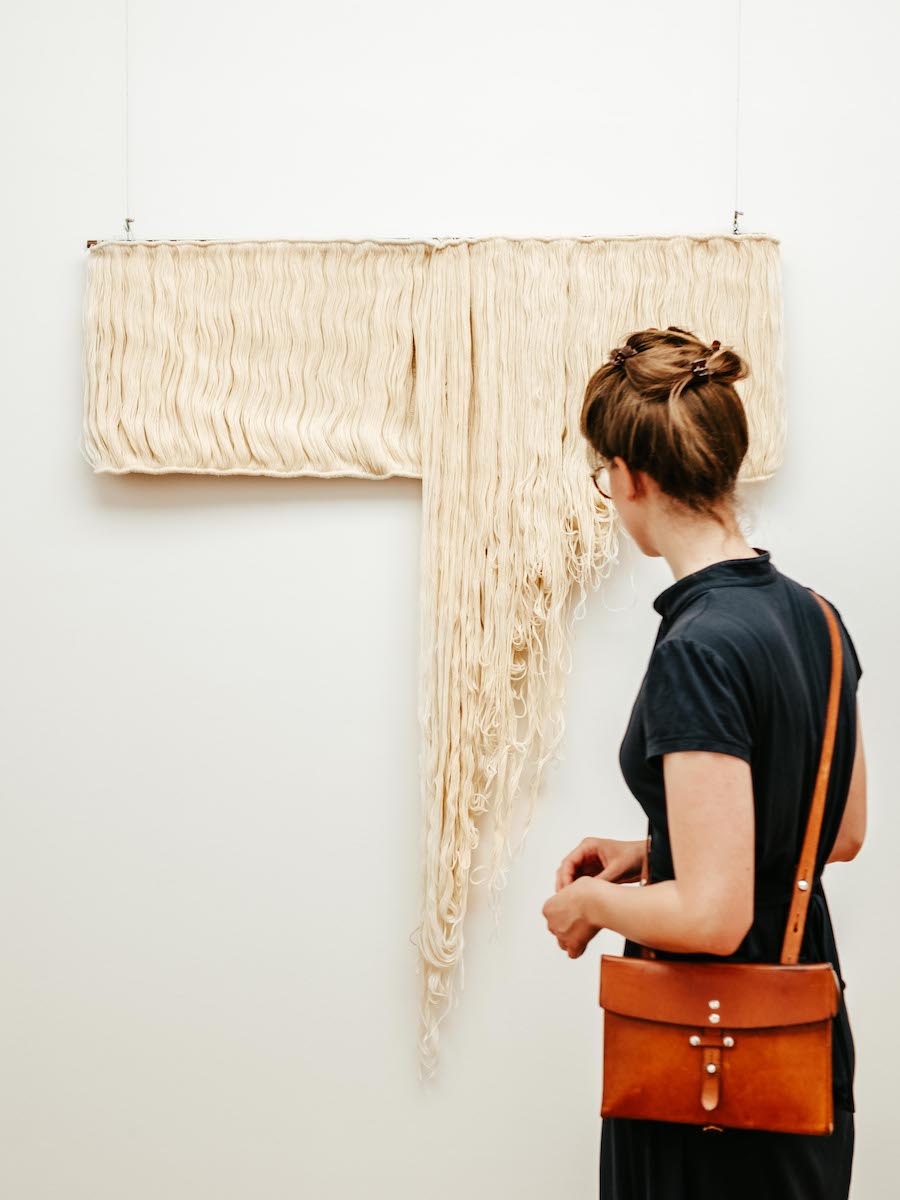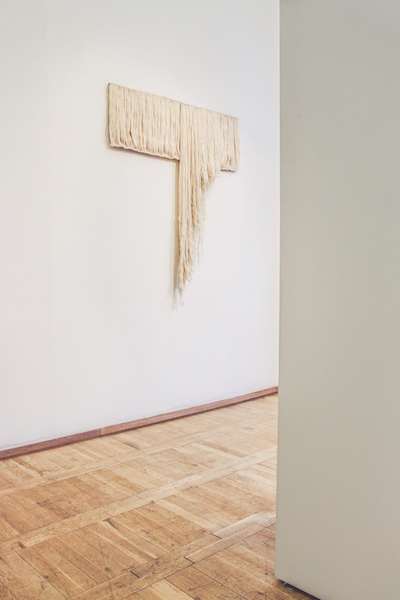
o.T.
2016
150x120x5cm
Gobelin, Wolle auf Baumwolle
untitled
2016
150x120x5cm
tapestry
wool on cotton warp
Für den Arbeitsprozess maßgeblich ist der Rhythmus des Webens. Die Körperlichkeit, beziehungsweise der persönliche Gestus, hat die Ausmaße des Stückes abge– steckt. Durch die Reduktion der Farbe hin zum Monochrom entsteht ein homogener Farbklang, der Mithilfe vom Licht zum Schwingen gebracht werden kann. Die Reduktion in Form und Farbe führt zu einer Konzentration auf das Material und die Intensität der Wiederholung.
Die Linien wollen weiter gezogen, weitergedacht werden und so zieht die Wolle ihre Kreise, verbindet nicht nur die Kettfäden miteinander, sondern schließt diese ein und schützt sie vor den Blicken der Betrachter.
The rhythm of weaving is fundamental to the working process. Physicality, or rather the personal gesture, has defined the dimensions of the piece. By reducing color to monochrome, a homogeneous color tone emerges, which can be set into motion by light. The reduction in form and color leads to a focus on the material itself and the intensity of repetition.
The lines seem to want to be extended, to be continued in thought, and so the wool traces its circles, not only connecting the warp threads with one another but also enclosing them and shielding them from the viewers’ gaze.





o.T.
2016
150x120x5cm
Gobelin, Wolle auf Baumwolle
untitled
2016
150x120x5cm
tapestry
wool on cotton warp
Für den Arbeitsprozess maßgeblich ist der Rhythmus des Webens. Die Körperlichkeit, beziehungsweise der persönliche Gestus, hat die Ausmaße des Stückes abge– steckt. Durch die Reduktion der Farbe hin zum Monochrom entsteht ein homogener Farbklang, der Mithilfe vom Licht zum Schwingen gebracht werden kann. Die Reduktion in Form und Farbe führt zu einer Konzentration auf das Material und die Intensität der Wiederholung.
Die Linien wollen weiter gezogen, weitergedacht werden und so zieht die Wolle ihre Kreise, verbindet nicht nur die Kettfäden miteinander, sondern schließt diese ein und schützt sie vor den Blicken der Betrachter.
The rhythm of weaving is fundamental to the working process. Physicality, or rather the personal gesture, has defined the dimensions of the piece. By reducing color to monochrome, a homogeneous color tone emerges, which can be set into motion by light. The reduction in form and color leads to a focus on the material itself and the intensity of repetition.
The lines seem to want to be extended, to be continued in thought, and so the wool traces its circles, not only connecting the warp threads with one another but also enclosing them and shielding them from the viewers’ gaze.



